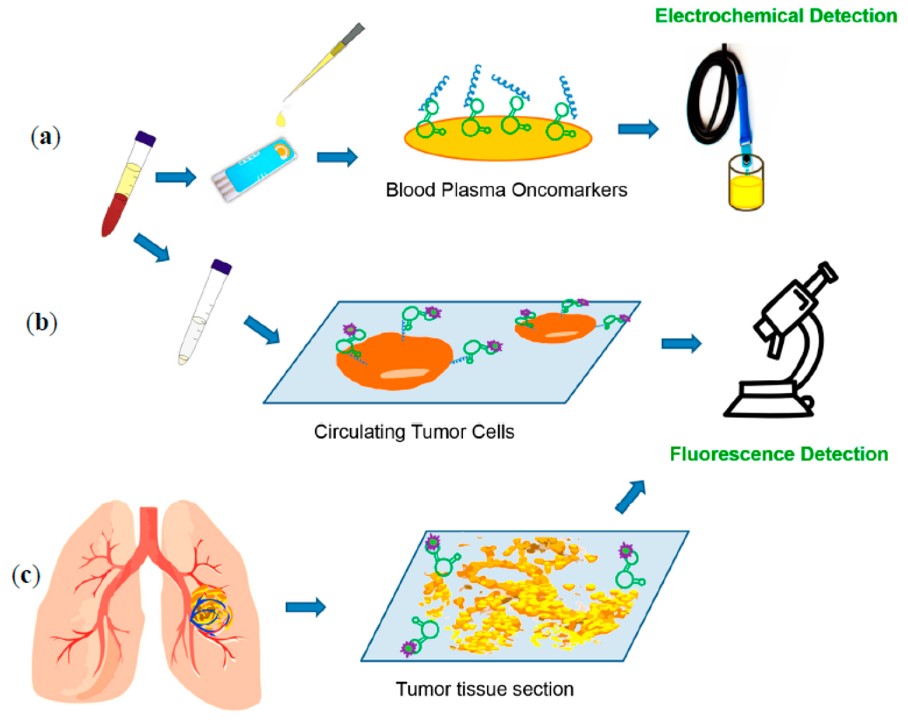Product List Background
Background
Lung cancer is a malignancy that develops in the tissues of the lungs, generally arising from epithelial cells. It is one of the most severe forms of cancer worldwide, often diagnosed at advanced stages due to nonspecific symptoms. Primarily caused by long-term exposure to carcinogens like tobacco smoke, it damages airway epithelial cells, leading to unchecked cell growth and tumor formation. The severity of lung cancer varies by type and stage, with potential consequences including respiratory compromise, metastasis to other organs, and significant mortality rates.
Symptoms of lung cancer typically include persistent cough, chest discomfort, shortness of breath, coughing up blood, fatigue, unexplained weight reduction, and recurring respiratory infections. Early stages may be asymptomatic, leading to diagnosis at advanced stages.
Lung cancer arises predominantly from behavioral risk factors such as smoking tobacco, which accounts for the majority of cases. Environmental risk factors include exposure to radon, asbestos, and air pollution. Genetic predispositions, while less common, can also play a role in susceptibility to lung cancer development, influencing individual risk profiles and treatment responses.
Non-Small Cell Lung Cancer (NSCLC) is the most frequent type, encompassing about 85% of all lung cancers. NSCLC is further classified into three main subtypes:
1) adenocarcinoma, which often begins in the outer parts of the lungs;
2) squamous cell carcinoma, which generally occurs in the central part of the lungs;
3) Large cell carcinoma can influence any part of the lung and grow and spread faster than the other subtypes.
Small Cell Lung Cancer (SCLC): This aggressive form of lung cancer accounts for around 10-15% of cases. It tends to increase and spread early to other body parts, often diagnosed at an advanced stage.
Other Types of Cancer in the Lungs: These include rare types such as carcinoid tumors (typically slow-growing and rarely spreading), sarcomas (developing in the lung's supportive tissues), and lymphomas (cancers originating in the immune system cells of the lung).
 Fig.1 Classification of lung cancer.1
Fig.1 Classification of lung cancer.1
Lung Cancer Diagnosis and Treatment
Diagnosing lung cancer involves imaging tests like CT scans and PET scans, along with biopsies for tissue analysis and genetic testing to identify specific mutations that can guide treatment decisions, such as EGFR or ALK mutations. Treatment options include surgery for early-stage cancers, chemotherapy, radiation therapy, targeted therapies, and immunotherapy that aim to inhibit specific molecular pathways driving cancer growth. Aptamers, synthetic DNA/RNA molecules, are emerging as promising diagnostic tools (detecting specific biomarkers) and treatments (delivering drugs to cancer cells). Treatment plans are tailored based on the cancer's type, stage, and individual patient factors to optimize outcomes and manage side effects effectively.
 Fig.2 Schematic representation of aptamer-based lung cancer diagnostic tools.2
Fig.2 Schematic representation of aptamer-based lung cancer diagnostic tools.2
Lung Cancer Biomarkers
Lung cancer biomarkers include substances or genetic changes indicative of the disease, aiding diagnosis and treatment decisions. Serum markers like CEA, SCC, and NSE help detect cancer, while molecular markers such as EGFR and ALK mutations guide targeted therapies. Oncogenes like KRAS, MET, HER2, and tumor suppressor genes, including TP53, provide insights into disease progression and treatment response. Immunotherapy markers like PD-L1 and CTLA-4 expression are pivotal in predicting the responses to immune-based treatments.
Lung Cancer Stem Cells
Lung cancer stem cells (CSCs) are a subset of cells within tumors capable of self-renewal and differentiation, contributing to tumor growth and treatment resistance. CSC markers include CD133, CD90, and ALDH1. CSCs serve as valuable tools for studying lung cancer progression and as targets for novel therapeutic strategies aimed at eliminating the root cause of lung cancer recurrence and metastasis.
Creative Biolabs provides high-specificity and low-immunogenicity aptamers targeting lung cancer, offering precise tools for your research.
References
-
Sánchez-Ortega, Miriam, Ana Clara Carrera, and Antonio Garrido. "Role of NRF2 in lung cancer." Cells 10.8 (2021): 1879.
-
Zamay, Tatiana N., et al. "Current and prospective protein biomarkers of lung cancer." Cancers 9.11 (2017): 155.


 Datasheet
Datasheet Fig.1 Classification of lung cancer.1
Fig.1 Classification of lung cancer.1
 Fig.2 Schematic representation of aptamer-based lung cancer diagnostic tools.2
Fig.2 Schematic representation of aptamer-based lung cancer diagnostic tools.2
